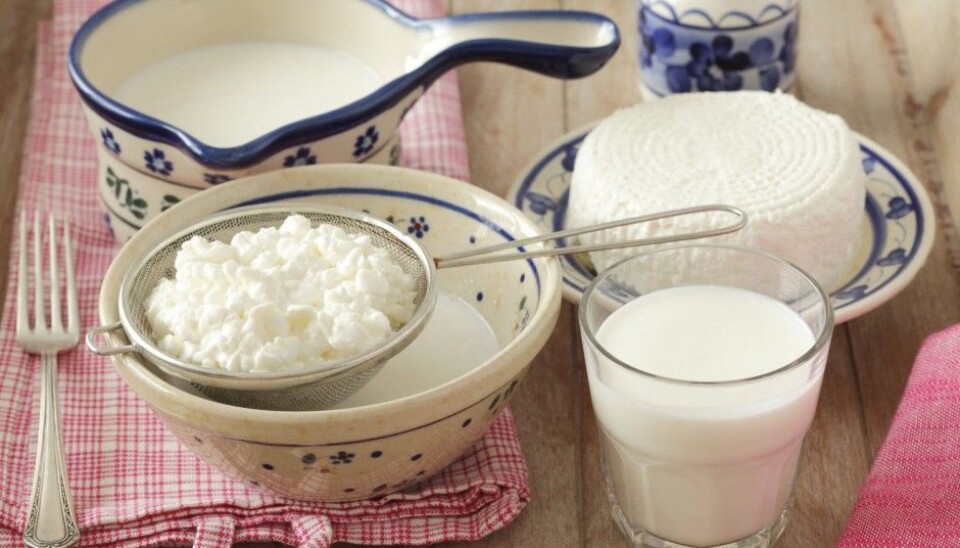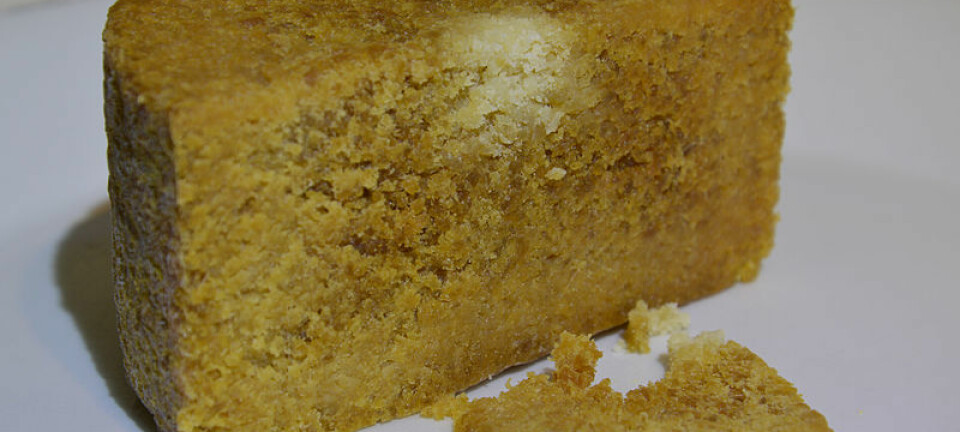
Milk proteins have slimming effect
Proteins from milk kept mice slim, whereas proteins from pork and chicken had the opposite effect.
Scientists and the general public have been attentive to the health impacts of various types of fats and carbohydrates for decades.
Proteins, however, have often just been seen as proteins.
This will probably be changing now. Studies have started indicating that proteins from different types of food have different effects.
A Norwegian study using mice earlier this year showed this quite clearly.
Researchers at the National Institute of Nutrition and Seafood Research (NIFES) in Bergen have tested how mice reacted to diets in which their proteins came from milk (casein), soya, cod, beef, chicken or pork. It turned out that the weights of the rodents varied remarkably, according to Head of Research Lise Madsen, who led the study.
“We ran the experiment because we thought different proteins surely had different effects. But we were surprised to see such enormous variations.”
Slimming proteins
People who want to lose weight are often asked to eat more protein. This is not without a reason. Research has shown that proteins give us more of sense of being full.
Research on lab mice has also shown proteins to have a slimming effect on their own, even when not reducing caloric intake.
But these animal studies have had a vital weakness. They have almost all used milk, in other words casein, as the protein source.
Would if not all proteins have the same effect?
This is what Lise Madsen at NIFES and her colleagues wanted to find out. They gave different types of proteins to mice along with an otherwise fattening diet. Would the disparate proteins show different capabilities in hampering fatness?
If the results from the study are accurate, the answer seems clear: Yes.
Milk mice stayed slim
The mice who were fed casein, the dairy proteins, retained the same weight as mice on normal rations, even though they were getting a higher calorie diet that otherwise would have made them fat. All the other mice did gain weight.
Mice that were fed soya proteins got a little fatter. Those who got their proteins from cod or beef grew considerably fatter – just as overweight as mice on diets rich in fat and sugar.
The mice who gained the most body fat, however, were the ones whose proteins came from chicken or pork.
“There was an incredibly big difference. These mice had six or seven times as much body fat as normal,” says Madsen.
Then she and her colleagues put the fat mice on diets to slim them down, consisting of little fats along with proteins either from milk or pork.
It turned out that the mice on casein shed fat, but not the mice on pork proteins.
Hints about humans
Associate Professor Simon Dankel of the University of Bergen’s Department of Clinical Science also conducts research on nutrition and obesity but was not a participant in the NIFES study. He is surprised by how large the difference was among the disparate proteins.
“This is in principle fascinating. It turns out that not only the percentages of nutrients have an effect on fatness, but also the sources, the foods themselves,” he says.
The big question of course is whether the same phenomenon applies to us. Nobody knows yet, but Dankel suspects that we can find an effect.
“Population studies have been made on the association between diet and obesity where it has been seen that dairy products can have a protective effect,” he says.
Different proteins are comprised of diverse amino acids. Dankel’s own studies have shown that the levels of these amino acids in the blood link to the risk of obesity and type 2 diabetes.
Madsen points to other findings that could indicate such disparate effects of different proteins.
“Studies which have looked into the slimming effect of high protein diets have given divergent results. It could be that this is because of different sources of the proteins,” she says.
"Casein is special"
Madsen and colleagues have some ideas about what made the mice have such different reactions to the various protein sources.
The effect cannot be explained by satiation or appetites. The scientists ensured that all the mice in the experiment consumed the same amount of calories, independent of their diets.
When they weighed in differently it must have been that those who were fed casein utilised fewer of the calories in their food, or their metabolisms changed – they burned off more energy.
Madsen and colleagues saw signs of the latter.
“We think that casein is really special.”
This protein appeared to trigger a dual process in the cells, where fats were decomposed at the same time as new ones were created. This is most unusual.
Normally the body halts the creation of new fats while fats are being decomposed, because energy is required to build up fats. When both processes occur simultaneously the body burns more energy than it normally does.
Thus there is less surplus energy getting stored as fat.
“In addition, casein made more brown fat cells,” says Madsen.
Brown fat cells, or brown adipose tissue, converts fat to heat and burns energy rather than stores it.
Why chicken and pork?
These two mechanisms could explain how the mice could wind up with such different weights. But the scientists are still puzzled.
“For example, we have no idea why the mice that were given proteins from chicken or pork got so enormously fat,” says Madsen.
“We don’t even have a hypothesis.”
Maybe differences in gut flora had an impact?
“We are already at work on a study to find out,” informs Madsen.
She and her colleagues have applied for funds to look into whether the different proteins also have disparate effects on humans.
Dankel from the University of Bergen expects them to find a moderate effect on humans. He thinks our ideas about proteins will gain nuance in the years ahead.
“Discovering how different proteins affect our health will become increasingly important,” he says.
--------------------------------------
Read the Norwegian version of this article at forskning.no
Translated by: Glenn Ostling
































